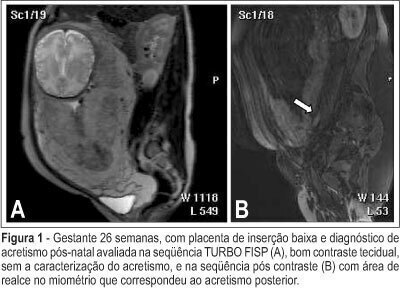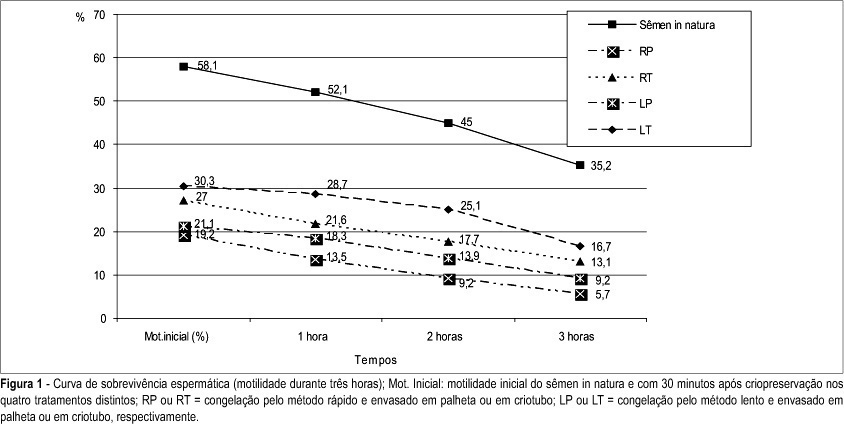Summary
Revista Brasileira de Ginecologia e Obstetrícia. 2007;29(1):18-26
DOI 10.1590/S0100-72032007000100004
PURPOSE: to evaluate the loco-regional response to primary chemotherapy in patients with breast cancer at stages II and III. METHODS: a retrospective and analytical clinical study carried out in 97 patients with an average age of 52.2 years old, with breast cancer at stages II and III, attended from January 1993 to December 2004, and submitted to 3 to 4 cycles of primary chemotherapy with 5-fluorouracil - 500 mg/m2, epirubicin - 50 mg/m2 and cyclophosphamide - 500 mg/m2 or doxorubicin - 50 mg/m2 e cyclophosphamide - 500 mg/m2, and then to loco-regional surgical conservative or radical surgical treatment. Chi-square and Fisher’s exact tests were used to study the association among the variables (age, menopausal state, pre-chemotherapy tumoral volume, axillary condition, stage, therapeutic scheme and number of cycles), while Pearson’s correlation coefficient was used for the quantitative variables (tumoral volume according to the anatomo-pathological study and the post-chemotherapy clinical tumoral volume. The significance level was 5%. RESULTS: there were 56.8% of cases at stage II and 43.2% at stage III. Approximately 50% of the patients received FEC50 and 50% AC. Objective clinical response with primary chemotherapy was obtained in 64.9% of the cases. Full clinical response occurred in 12.3% of patients, while full pathological response occurred in 10.3% of the cases. CONCLUSIONS: there was a statistically significant correlation between the number of cycles and the response to primary chemotherapy. Patients who received 4 cycles had better response than those who received 3 cycles. There was also a statistically significant concordance between the evaluation through clinical examination of the response to primary chemotherapy and the pathological findings. No statistically significant correlation was observed concerning age, menopausal status, tumoral volume, and pretreatment of axillary damage.

Summary
Revista Brasileira de Ginecologia e Obstetrícia. 2007;29(1):34-40
DOI 10.1590/S0100-72032007000100006
PURPOSE: to determine the cesarean section (CS) rate in Campinas (SP) and to identify its risk factors. METHODS: a cross-sectional study that analyzed data obtained from Live Birth Certificates in 2001. The dependent variable was the type of delivery and the independent variables were: mothers’ characteristics and those related to their pregnancies, deliveries and to newborns. The assessment of the association among variables was performed through the chi2 test, and crude and adjusted odds ratio (OR) values were calculated. RESULTS: the CS rate was 54.9%. The chances of having CS increased 1.9 times for women from 20-34 years old (adjOR-1.9; 95% CI:1.7-2.1); 3.7 times for those over 35 years old (adjOR-3.8; 95% CI:3.2-4.5); 1.5 times for those who studied from 8-11 years (adjOR-1.5; 95% CI:1.4-1.6); 2.5 times for those who studied more than 11 years (adjOR-2.6; 95% CI:2.2-2.9); 1.3 times for those who were married (adjOR-1.3; 95 % CI:1.2-1.4); 1.6 times for those who had jobs (adjOR-1.6; 95% CI:1.5-1.8); 1.2 times for who had good living conditions (adjOR-1.2; 95% CI:1.0-1.3); 2.2 times for primiparous (adjOR-2.2; 95% CI:1.9-2.5), 1.6 times for multiparous (adjOR-1.6; 95% CI:1.4-1.9) and 2.7 times in twin gestations (adjOR-2.7; 95% CI:1.9-3.9). The women who had inadequate prenatal care were protected for CS (adjOR-0.6; 95% CI:0.5-0.7). CONCLUSION: the chance of having CS was greater among women with better socio-economic conditions, with adequate prenatal care, for primiparous, for multiparous and in twin gestations, suggesting that the basis for indication of cesarean sections were not restricted to clinical factors but influenced by non-medical reasons.
Summary
Revista Brasileira de Ginecologia e Obstetrícia. 2006;28(12):715-720
DOI 10.1590/S0100-72032006001200005
PURPOSE: to investigate the effects of previous bilateral tubal sterilization on the outcome of in vitro fertilization. METHODS: retrospective study of 98 consecutive in vitro fertilization cycles. Fifty-five women with previous tubal sterilization without any other infertility factor (TL group) were compared with 43 women with infertility due only to mild male factor (MI group. Age, cancellation rate per induction cycle, response to ovulation induction (number of days of ovulation induction, total amount of gonadotrophin units used, number of follicles and oocytes retrieved), fertilization and cleavage rates, number of transferred embryos and clinical pregnancy per transfer cycle were the variables considered. RESULTS: the cycle discontinuation rate due to poor response, results of ovulation induction, fertilization and cleavage rates, number of transferred embryos and the occurrence of clinical pregnancy were similar in both groups. Considering solely the variable age in TL group, we observed that patients older than 35 years required higher gonadotrophin doses during ovulation induction (2445 versus 2122 IU), presented lower response with fewer follicular growth (11.3 versus 15.8) and less oocytes retrieved (6.1 versus 8.5) compared to younger women (34 years old or less). CONCLUSIONS: tubal sterilization did not interfere with in vitro fertilization outcomes. We observed a worse response to ovulation induction in women older than 35 years, who had previous tubal sterilization.
Summary
Revista Brasileira de Ginecologia e Obstetrícia. 2006;28(12):700-707
DOI 10.1590/S0100-72032006001200003
PURPOSE: to establish the main signs of placental accretism in magnetic resonance imaging (MRI) in patients with clinical suspicion and to estimate the benefit of this method. METHODS: prospective transversal study with 15 patients suspected of placental accretism, referred between March 2003 and February 2006. Gestational age varied from 20 to 31 weeks. All patients underwent MRI to study the placenta and had previously done an ultrasonography. Material was sent to histological study. MRI was done on Magnetom Impact and Sonata Maestro Class Siemens®, with acquired sequences HASTE, TURBO SPIN in axial, sagittal, coronal planes and echo gradient (GE®), pre- and post-dynamic contrast in the best plan for acquisition. Images were analyzed by a team of two radiologists. RESULTS: mean gestational age was 24.3 weeks. We studied seven placenta previa (47%), six anterior placentas (40%) and two posterior placentas (13%). Ultrasonography was positive in 80% of the palcentas and MRI in 53%. However, echography had a low concordance with anatomic pathological studies by Kappa test (11%), revealing 75% of sensitivity, 14% of specificity, 50% as positive predictive value (PPV) and 33% as negative predictive value (NPV). MRI had an excellent concordance with anatomic pathological studies (0.86), showing 100% of sensitivity, 86% of specificity, 89% as PPV and 100% as NPV. CONCLUSIONS: MRI is useful for placental accretism diagnosis. The principal findings are transmural hyper-signal, the loss of continuity in myometrial wall in fast sequences and the identification of vessels invading myometrial layer in dynamic sequences.

Summary
Revista Brasileira de Ginecologia e Obstetrícia. 2006;28(12):708-714
DOI 10.1590/S0100-72032006001200004
PURPOSE: to compare two different methods of freezing and two types of human semen storage during cryopreservation process. METHODS: experimental research in which the cryopreservation of 18 semen samples from 18 volunteers was studied. Following the addition of the cryoprotectant medium, Test-yolk buffer, the semen samples were packaged into 0.25 mL straws or into 2 mL cryotubes and submitted to cryopreservation by slow or rapid methods, in four different treatments: RS (cryopreservation by rapid method and packaged in straws), RT (rapid-cryotubes), SS (slow-straws), and ST (slow-cryotubes). Samples were thawed after 24 hand then maintained at 37ºC. Data collected were analyzed by the Student t-test, with p<0.05, using the SPSS computer program for Windows®, version 11.0.0. RESULTS: the motility of spermatozoa decreased after the cryopreservation process. The initial motility rate was 58.1% and motilities after the different methods of cryopreservation were 19.2% (RS), 27% (RT), 21.1% (SS) and 30.3% (ST). There was a significant decrease of the normal morphology. The initial normal morphology was 14.2% and morphologies after the different methods of cryopreservation were 12.8% (RS), 12.6% (RT), 12.6% (SS) and 12.4% (ST). CONCLUSIONS: the slow method of cryopreservation with storage in cryotubes showed the best recovery of motile cells after freezing and thawing. There was no difference among the methods when appraised the morphology.

Summary
Revista Brasileira de Ginecologia e Obstetrícia. 2006;28(12):693-699
DOI 10.1590/S0100-72032006001200002
PURPOSE: to analyze the effect of glucose in the materno-fetal hemodynamics through dopplervelocimetric assessment of the materno-fetal and fetoplacentary circulation. METHODS: the study was carried out by a single observer on 31 clinically healthy pregnant women from the 28th to the 36th gestational week. Parameters were assessed immediately before or 60 minutes after the ingestion of 50 g of glucose. The including criteria comprised normal clinical and laboratorial evaluation, the presence of only one fetus, gestational age between 28 and 36 weeks confirmed by ultrasonography and/or the date of the last menstruation, fasting glycemia less or equal to 110 mg/dL and less than 140 mg/dL after 50 g of glucose overload. The excluding criteria consisted of the presence of fetal malformation or development alterations, labor, diabetes as a family predisposition, pathologies due to or underlying gestation and use of tobacco, alcohol and/or other substances. The mother´s common carotid artery and uterine arteries, the umbilical artery and the fetal medial cerebral artery and abdominal aorta were evaluated. In each blood vessel, the following parameters were analyzed: resistance index, pulsatility index, maximum systolic speed, final diastolic speed and acceleration time. The fetal heart rate was evaluated by M Mode ultrasonography. For the statistical analysis, the Student's t test was used when the variable presented normal distribution in Kolmogorov-Smirnov's test. When normality was rejected, the Wilcoxon's non-parametric test was used, with the significance level always established at p<0.05. RESULTS: the maternal glycemia increased after the ingestion of 50 g of glucose (before: 68.0±10.1 mg/dL and after: 104.6±28.2 mg/dL; p<0.001), and fetal heart rate decreased after the glucose ingestion (before: 137.9±6.1 bpm and after: 134.5±6.9 bpm; p<0.001). The umbilical artery presented an increase in the pulsatility index (before: 0.8±0.1 and after: 0.9±0.2; p=0.03). Significant velocimetric alterations were not found in the other vessels or in the other indexes investigated. CONCLUSIONS: in spite of the variation in the levels of maternal glycemia and in the fetal heart rate following glucose ingestion, no significant flow alteration occurred in the following vessels: umbilical artery, fetal medial cerebral artery and aorta; nor in the carotid and uterine maternal arteries. We conclude that the glucose concentration used was released without hemodynamic interference in the materno-fetal compartment.